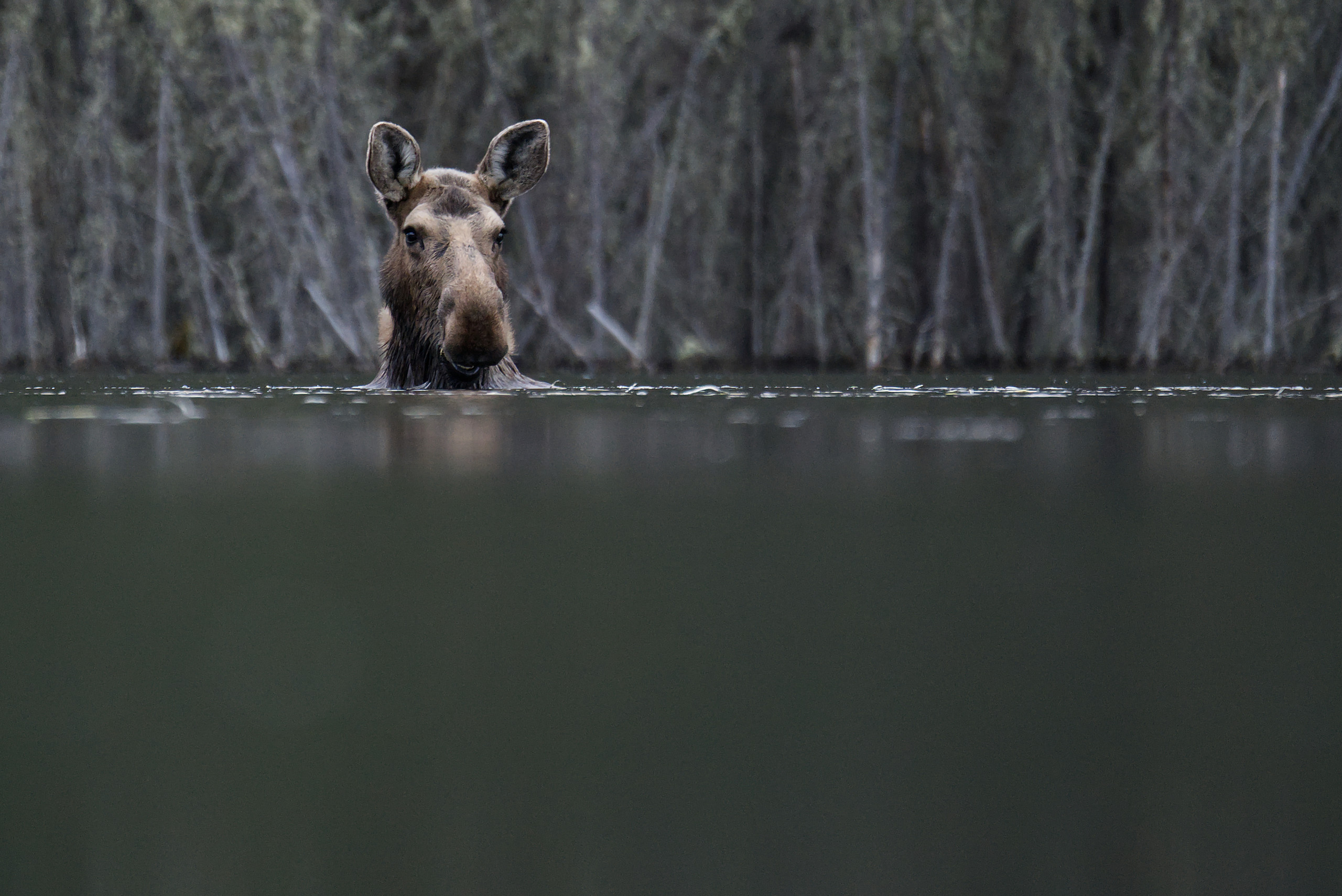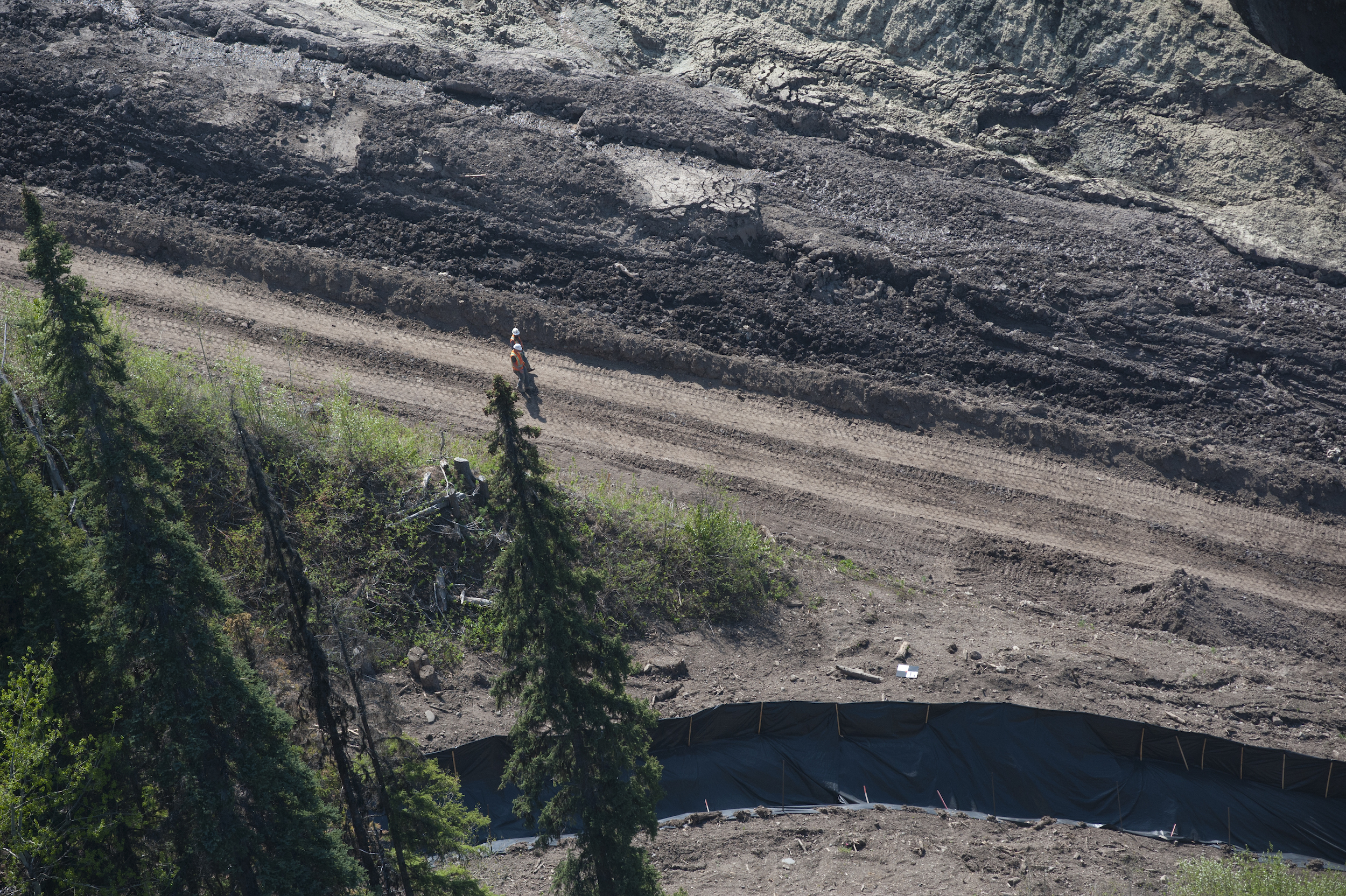
Court halts tailings increase as First Nation challenges B.C.’s decision to greenlight it
Court sides with Xatśūll First Nation, temporarily halting Mount Polley mine waste expansion
Get the inside scoop on The Narwhal’s environment and climate reporting by signing up for our free newsletter.
Backpacks full of chemical herbicides or goats and wildflowers? As TC Energy prepares its plans to manage invasive species, weeds and other vegetation along the 670-kilometre Coastal GasLink pipeline right of way, the focus is on herbicides.
In a recent notice, the Calgary-based pipeline company informed northern B.C. communities of its plans to use herbicides, which could be deployed through special backpacks filled with the chemicals or sprayed from the backs of all-terrain vehicles, to “control invasive and noxious weeds and undesirable vegetation” and “to ensure pipeline or facility site security.” The notice said the plan, currently in development, will apply to all components of the pipeline, including the right of way and access roads.
The vegetation management program will be in place from 2025 to 2030 and include areas near the B.C. communities of Dawson Creek, Fort St. John, Groundbirch, Chetwynd, Prince George, Vanderhoof, Fraser Lake, Burns Lake, Houston, Smithers, Kitimat and Terrace.

TC Energy’s draft plan outlines potential alternatives to herbicides, including targeted grazing using goats or sheep, weed whacking and planting native species to choke out invasive plants. But while the draft plan notes Coastal GasLink will consider “a variety of treatment options,” the public notice only mentions herbicides.
Among the two dozen herbicides TC Energy says it may use are several known to be toxic to birds, fish and bees, according to data compiled by the U.S.-based advocacy group Beyond Pesticides. The list includes glyphosate, 2,4-D and picloram. At least one chemical on the list is considered a per- and polyfluoroalkyl substance, or PFAS — a group of substances more commonly known as “forever chemicals.”
Allie Golt, a botanist and ecologist based in Prince George, B.C., who studies glyphosate and other herbicides, said there are more questions than answers when it comes to the ecological impacts of spraying areas like a pipeline right of way.
“I found that the residues of glyphosate remain in flower tissues, so in the entire flowers of prickly rose and fireweed, for at least two years post-application,” she said in an interview. “The implications of how that impacts, for example, bumblebees or other foraging critters hasn’t really been explored.”
James Steidle, who leads a forest advocacy group called Stop the Spray B.C., said he takes issue with the notification process. The notice was published in a Burns Lake newspaper, including on its website, but he said public awareness of the plan and its potential impacts is minimal.
“I don’t think these notices are getting out to the public adequately,” he said. “I pay attention to this stuff and I didn’t see anything about this pest management plan getting developed. They should have advertisements on Facebook, on social media. A lot of these communities don’t have newspapers.”
According to TC Energy’s notice, the public has until Friday to provide comments on the proposed plan.
When Coastal GasLink received its environmental assessment certificate in 2014, the B.C. government included a condition requiring the pipeline company to “use alternative methods of vegetation control” on Indigenous lands where the communities “requested that pesticides or herbicides not be used.”
The Narwhal reviewed consultation documents from the project’s assessment and found at least 13 First Nations along the pipeline route officially registered concerns around the use of herbicides.
In 2014, a group of Treaty 8 nations in the province’s northeast, for example, flagged their concerns with the company’s plans, noting, “We do not, in fact, support use of any chemical herbicides as the water and fish in Treaty 8 territory are already highly stressed.” The group added, “wildlife can ingest treated weeds, which creates adverse effects on wildlife and indirectly, an exposure pathway on traditional land users.”
Similarly, Nadleh Whut’en First Nation, in a joint statement with the Nak’azdli Band Council, said in 2014 “any application of chemicals at or near wetlands is a huge concern for First Nations living along the pipeline route. Coastal GasLink must prohibit use of such chemicals and look for alternatives that will not impact water quality and traditional use species.” Nadleh and Nak’azdli territories are northwest of Prince George, near Fraser Lake. Monica Buchanan, a Nadleh Whut’en member, confirmed to The Narwhal the nation remains against spraying on its territories.

TC Energy did not directly answer The Narwhal’s questions about whether it intends to spray herbicides on the 13 First Nations territories.
“Coastal GasLink’s approach to weed management is developed in consultation with communities and done in accordance with applicable regulation and conditions of permits,” a company spokesperson wrote in an emailed statement. “We have consulted with Indigenous groups, landowners, regional districts, local plant councils and the public about the proposed integrated vegetation management plan (IVMP) and feedback has been incorporated, where appropriate, to shape it.”
Shannon McPhail, executive director of Skeena Watershed Conservation Coalition, said she’s concerned about the discrepancy between the public notice, which suggests herbicides will be used over the full length of the pipeline, and the government requirement.
“The fact that more than half of the First Nations who responded had serious and emphatic concerns about this and it’s even in their plan still … is a slap in the face to the people who live here, to the people who fish here, who hunt here, to our kids who swim in the rivers,” she said.
The B.C. Environmental Assessment Office did not respond to questions by publication time.
In addition to spraying, TC Energy could incorporate alternative methods of managing invasive plant species, according to the draft plan, made public this fall.
As well as potentially using animals to graze invasive species, the company lists hand pulling, manual brushing (weed whacking) and planting native species, including flowers and grasses, as ways it could offset or replace the use of herbicides. TC Energy wouldn’t be the first company to use animals — last year, Enbridge Gas piloted a program using goats to clear invasive plants from a small section of its natural gas pipeline network north of Prince George.
For McPhail, choosing alternative methods to control invasive species and other vegetation is a no-brainer. She noted construction of Coastal GasLink was “riddled with issues of non-compliance” which cost TC Energy more than $800,000 in fines and damaged sensitive ecosystems.

“It comes down to them choosing whether they want their legacy to be more toxic or do they want to actually finish this project on a better note,” she said. “Here’s an opportunity to do something beneficial for that land and for communities. Why not put locals to work, give them the brushing jobs? Why not turn part of the right of way into a pollinator haven and plant friendly plants that will support bee populations? Why not use the right of way to do some agriculture, for example, and feed communities? There’s no shortage of options.”
TC Energy did not say whether it has any specific plans in development for using alternative methods, but noted “Coastal GasLink prioritizes the use of qualified and competitive local Indigenous and local businesses” when hiring for jobs, including vegetation management.
Golt said she’s looked at how spraying can impact “off-target” species — nearby plants that get an accidental dose of the chemicals.
“There’s always going to be some sort of herbicide drift,” she said. “There may be accidental application to a species that is not a targeted species. There’s also the potential for a herbicide spill.”
Steidle said that could have unintentional effects on human health.
“People might be picking berries on the pipeline right of way and there might be levels of contaminants in these berries years after they’ve been sprayed,” he said. “So even if they put a sign up, it doesn’t mean the public’s being notified about potential contamination of these areas.”
When plants receive a smaller dose of herbicide, they often absorb the chemical but don’t die. Golt explained how her research found those smaller doses reduced prickly rose and fireweed pollen production.
“Bees are going to come and then they’re not going to be able to effectively pollinate other rose or fireweeds,” she said.
Steidle said there are other ways chemical treatments could have long-lasting impacts.
“They call them pyridine herbicides and they’re used to control broadleaf vegetation,” he explained, referring to chemicals that target leafy trees and plants such as aspen, dandelion and chickweed. He said “if you spray your fields with it and grow hay,” then feed that hay to horses or cattle and use their manure to make compost, “your tomatoes won’t grow years later.”
“So for instance, moose are in here eating this stuff and then they take a dump somewhere else, it spreads these chemicals around and that could have impacts on the ecosystem,” he said. “It’s probably pretty minimal but still you’re introducing all these chemicals into the environment just to keep this pipeline right of way clear.”
Golt said the lack of data is the most concerning.
“More research needs to be done into the long-term effects of herbicides on our environment,” she said. “Overall herbicide use may have greater implications on ecological roles of reproducing plants and the overall availability of food for animals — and we are not too sure what those are yet. I think it’s potentially better to use other solutions in the meantime, until we have a better understanding of the environmental impacts of these herbicides.”
Get the inside scoop on The Narwhal’s environment and climate reporting by signing up for our free newsletter. On a warm September evening nearly 15...
Continue reading
Court sides with Xatśūll First Nation, temporarily halting Mount Polley mine waste expansion

Break out the champagne: Emma’s storied life and leadership in journalism has earned her the...

How can we limit damage from disasters like the 2024 Toronto floods? In this explainer...
